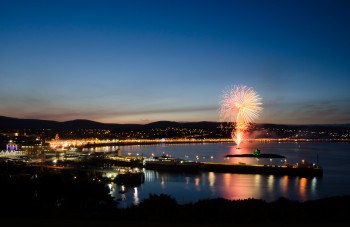November 30, 2015
Ports of the World: Douglas, Ramsey & Port St. Mary, Isle of Man

In this issue we present our home ports!
Isle of Man, or Ellan Vannin in the local Manx language, is one of the oldest nations on earth, situated in the Irish Sea roughly equidistant between England, Scotland, Ireland and Wales. This location is key to its independence and own soul.
Douglas, the capital of Isle of Man, lies in a valley formed by the rivers Dhoo (meaning 'dark' in Manx) and Glas (meaning 'light'), on the island's east coast. Douglas harbour lies at the mouth of the two rivers. A beautiful port to arrive to, at night-time all the lights from the city and the Douglas Promenade can be seen as you enter Douglas Bay, before turning port into the mouth of the rivers Dhoo and Glas.
Ramsey, in the north-eastern plains behind the central mountains, reflects the island's Viking past, with several Viking invasions of the town since the 11th century. Snaefell, the island's highest mountain at 1620m, still has a Scandinavian name dating back to the Vikings, meaning 'snow' and 'mountain'. Today Ramsey harbour is busy with fishing, leisure and freight vessels.

In the south lies Ferryl's home port, Port St. Mary, beloved by many for its beautiful bay. The port is quite special as the bay itself forms the port with a long breakwater sheltering it from the Irish Sea. Port St. Mary is also the queenie port of the world, with the annual queenie festival a big occasion. A scallop found in the Irish Sea, queenies, like our Ferryl products, are sold worldwide.
These three ports bring to mind all the smaller ports of the world and how special they are. Ports are like human beings – similar but all still unique. As an island nation, the sea-link and harbours are vital to the country of Isle of Man. Douglas, Ramsey and Port St. Mary – all beautiful ports and we are proud to call them home.



